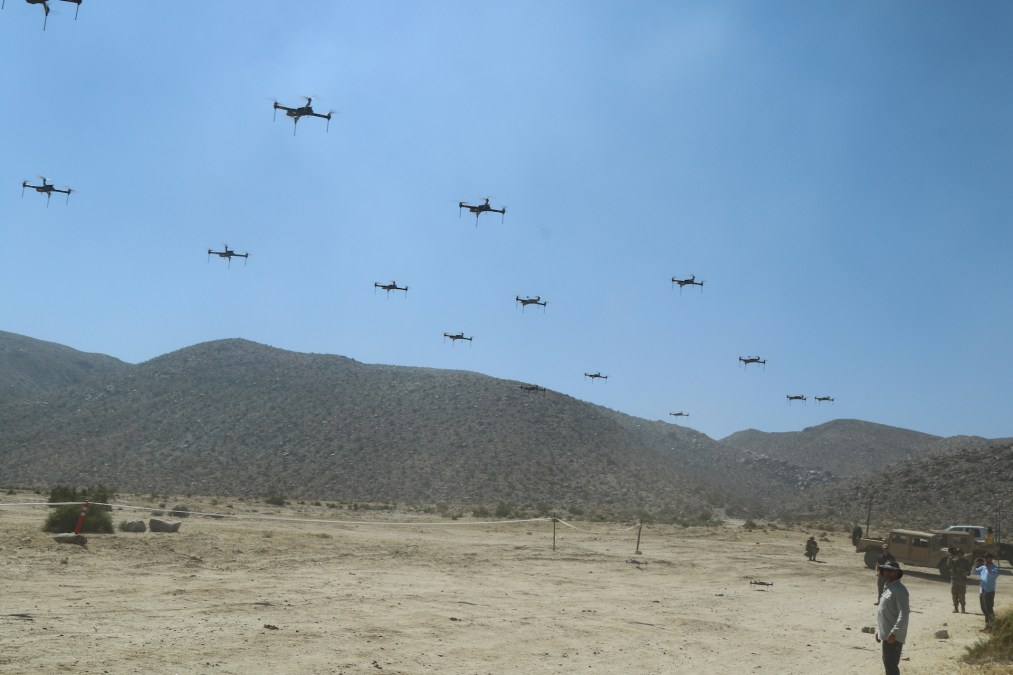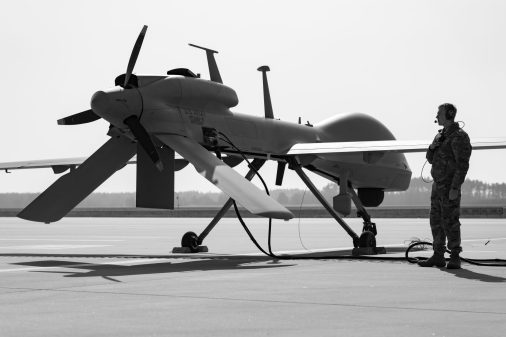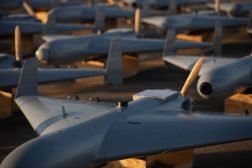Army, Marine Corps ping industry for more counter-drone tech

The Army is doing market research for mobile weapons platforms that can shoot down unmanned aerial systems, while the Marine Corps is soliciting advanced technologies that can help defend installations against small drones.
UAS and counter-UAS technologies have played a significant role in recent conflicts, including in Ukraine and the Middle East.
On Friday, the Army published a sources-sought notice on Sam.gov related to its Integrated Fires Rapid Capabilities Office-International, which “plans, coordinates and synchronizes programmatics, logistics, training, and technical management of international systems of systems, delivering emerging and rapid development Short Range Air Defense and Counter Unmanned Aircraft Systems capabilities to foreign partners,” per the RFI.
U.S. Army Aviation and Missile Command “anticipates a requirement to provide a Counter Unmanned Aircraft Systems (CUAS) turreted gun-based capability. The purpose of this announcement is to gain knowledge of interest, capabilities, and qualification of businesses to compete and perform a hybrid type contract with fixed price and cost reimbursable requirements,” the document states.
Contractors need to be capable of designing, documenting, manufacturing and integrating the tech, it noted.
The Army is eyeing mobile platforms, such as vehicle-mounted weapon systems, that can defeat drones using a rapid-fire cannon with automatic aiming capabilities.
Additional anticipated requirements include a command-and-control solution that can display air tracks and pass tracks to the gun system; active radar; electro-optical and infrared sensors; and the ability to raise the sensor and communication suite above a 10-meter tree line.
Notably, the service is requesting information about system performance data against Group 3 UAS, a category of unmanned aerial systems that kamikaze drones fall under.
Responses are due March 22.
The Army notice was released about a week after the Marines issued a solicitation for new tech to defend installations against small unmanned aerial systems.
“Failure to deliver this capability places personnel, covered facilities, and assets at unnecessary risk,” the RFP states. “The Marine Corps requires a modernized C-sUAS capability to counter the evolving threats.”
The address what it calls a capability gap, the service wants to incorporate advanced technologies “throughout the full kill chain” that can help detect, track, identify and defeat these types of drones. That includes integrated and networked sensor nodes and weapon systems that can defend installations “non-kinetically and kinetically,” according to the solicitation.
In U.S. military parlance, the term “kinetic” generally refers to capabilities that impact or explode near targets, such as missiles. The term “non-kinetic” is often used to refer to electronic warfare tools and directed energy weapons like high-powered lasers and microwaves.
Responses to the solicitation are due March 25.






